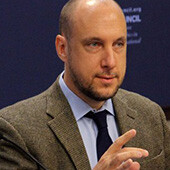Corruption is a problem that never seems to die, and it isn't limited to poor countries. This week, one of China's richest men, real estate tycoon Zhou Zhengyi, was sentenced to 16 years in prison for misappropriation of funds and bribery. In Japan, the ruling Fukuda government is teetering on collapse after the Japanese defense agency was raided over a bribery scandal.
Plenty of concerned thinkers have worked hard to come up with a solution to the problem of corrupt governance, both public and private. One obstacle to success has been the difficulty of getting people on the same page.
Corruption comes in many forms: improper payments, cronyism, patronage, graft. We can agree that these types of corruption are likely to be a drag on political and economic development. Yet these terms fail to satisfy the need for an overarching definition of corruption precisely because they are so narrow—they are types of corruption. In order to fight corruption effectively we need to know what forms it takes, but we also need to know what corruption is.
At the Carnegie Council we recently hosted a Workshop for Ethics in Business designed to highlight innovative approaches to fighting corruption. Representatives from General Electric, the World Bank, Lockheed Martin, and the NGO AccountAbility gathered to discuss the sometimes difficult ethical terrain of the international business landscape. Many corporations lament that they simply don't know what the boundaries are when it comes to corrupt practices around the globe. Multinational corporations find themselves navigating complex supply networks and diverse operating environments. These often include cultural differences. The common barrier to early action on corruption is the free rider problem—less ethical corporations may have lower costs and thus gain market share.
What emerged from the workshop was the need for a comprehensive and satisfying definition of corruption. The watchdog group Transparency International views corruption strictly as a question of improper payments or bribery. The World Bank, the leading development agency, defines corruption as the privatization of public policy. As development progresses, demand for better governance tends to rise. But the World Bank, whose mission is to promote development, deems it unwise to prioritize anticorruption measures over economic development.
Even at a high level of policy discussion and among partners, there is disagreement.
At a recent NYU Center for Global Affairs panel, I offered what I call the Kite Runner approach: All sins are a variation of theft, according to the father character in Khaled Hosseini's novel and forthcoming movie The Kite Runner. Murder, according to this approach, can be viewed as stolen life. This notion is useful because it clarifies the nature of corruption, making it less of a slippery concept. The way I see it, corruption is theft in which the consequences are a loss of public trust in institutions. This is a theme common to all moral traditions.
In an economic sense, corruption manifests itself as a tax on societies that tolerate the "public bad" of poor governance. Like pollution or a poor healthcare system, corruption raises the costs of doing daily business. The beneficiaries of this "tax," the corrupt, are unjustified in receiving the proceeds. The correlate of this view is that corruption is the result of weak demand for good governance. Overall, it's potentially the most harmful type of theft in that it breeds a lack of confidence in the utility of governance.
Once entrenched in the popular mindset, this type of cynicism is tough and costly to dislodge. In many parts of the developing world, public distrust of government and private sector business is a tree with roots that run deep. Our conversation at the Workshop for Ethics in Business uncovered five policy approaches to combating corruption and restoring public trust in both public and private institutions. These issues seemed to resonate with the panel and audience at the NYU meeting as well:
- Cultural questions surround the definition of corruption but ethical behavior is universal rather than contextual.
- Multistakeholder engagement is necessary to build accountability both inside and outside organizations.
- Transparency requires metrics designed to measure the success of anticorruption initiatives.
- Firms must create awareness in their far-flung operations of what is considered ethical and an explicit expectation of good behavior.
- Firms must be exemplars of good behavior when operating in ethically challenging environments.
Ethicist Thomas Donaldson has argued that the power and weight of multinational corporations dictates a responsibility to protect human rights. "Rights are the rock bottom of moral deliberation," he writes. And the flip side of a right is a duty. Looking at negative and positive rights, he shows that the two are really not separate. Negative rights require no action—like the right to liberty.
Positive rights require action—like a right to sufficient food. Meanwhile, the negative right of physical security requires positive actions such as maintenance of a police force, blurring the distinction between the two. Providing factory workers with safety goggles is a classic example of a corporation's duty not only to avoid depriving, but also to help protect from deprivation. Donaldson gives us a powerful statement here:
"One's freedom to speak freely is meaningless if one is weakened by hunger to the point of silence."
It is clearly a bad result if the behaviors embodied in corrupt practices—lies, deception, and graft—are universalized in the Kantian sense: "Act only on that maxim whereby you can at the same time will that it should be a universal law." In the context of minimizing corruption, it is reasonable to say that theft and deception are also inconsistent with protecting human rights, well being, and security.
There is an argument that views corruption as acceptable in given cultural contexts. I reject this view. While cultural questions may surround the definition of corruption, ethical behavior is not contextual but rather universal. There is simply no moral or philosophical tradition that explicitly condones lying or stealing. Human rights and moral codes against corrupt behavior are present in the most ancient of texts, including the Vedas, the Koran, Persia's Cyrus Cylinder, the Magna Carta, and the Confucian Analects.
Technology has a large role to play in the effort to boost transparency. Firms now use tracking and accounting software to reduce the effective distance between corporate headquarters and far-flung operations and suppliers. Transparency requires metrics designed to measure the success of anticorruption initiatives. Without measurable data, it can be difficult for firms to muster the will to act. Show them the numbers, however, and corrective action can be swift and decisive. Firms must also create awareness in their far-flung operations of what is considered ethical and broadcast their explicit expectation of good behavior.
At our Workshop for Ethics in Business, GE's Katy Choo told us that all GE employees worldwide are required to complete training on the company's integrity policies. Higher-risk functions require extra training on relevant policies. For example, sales and marketing employees that interface directly with customers are required to complete advanced training on improper payments.
"Businesses devise their own means to mitigate risk," Choo said. She explained that GE Energy has developed a digital tool that tracks the performance of its third parties on certain core integrity policies. "Third parties that don't complete the training are at serious risk of not being renewed because of their failure to comply," she continued.
Furthermore, firms can serve as exemplars of good behavior when operating in ethically challenging environments. When entering new markets, developing supply chains, and acquiring stakes in local entities, firms have the ability to dictate and transmit ethical business practices. Can you imagine how quickly good governance would spread if corporations suddenly refused en masse to pay bribes? This corporate culture of ethics must begin at the top. Interested and motivated executives must take an active role in setting what Choo called the "tone at the top."
And finally, the emerging phenomenon of citizen journalism, especially at the local level, has begun to play a vital role in the fight against corruption. Bloggers in China, for example, have used the Internet to expose corrupt real estate schemes, bringing these violations to the attention of mainstream media around the world. The Carnegie Council, Brown University, Oxford University, and Demos UK have started the Ethical Blogger Project and an accompanying blog to advance the positive contributions blogs can make to governance.
The more we can use technology to boost transparency, the more we can tell pillagers of public trust to go fly a kite.
![]() This article is licensed under a Creative Commons License.
This article is licensed under a Creative Commons License.
Please read our usage policy.




